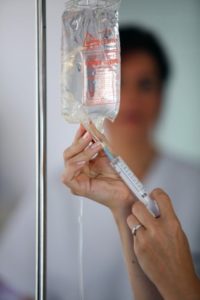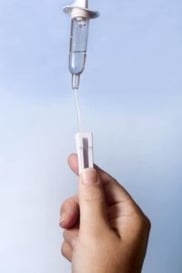
Post-traumatic stress disorder (PTSD). Major depression. Bipolar disorder. These conditions are some of the most excruciating experiences humans must endure. They are so painful that over a million people choose suicide annually over suffering another day. The severe physical effects are so debilitating that they impede normal daily functioning and amplify emotional pain.
Unfortunately, the most tormented patients do not respond to traditional mood disorder remedies, turning anxiety and depression into lifelong struggles. Fortunately, researchers and scientists have discovered that Ketamine Infusion Therapy is the most effective tool in chronic depression treatment. Intravenous (IV) ketamine therapy is the most typical and analyzed route of administration (ROA). Discovering how it helps the worst cases find solace can give you hope.
Scientific Research
Numerous studies have shown that low-dose IV Ketamine Infusion Therapy can alleviate lingering depression symptoms swiftly. Some of the foremost institutions, including Johns Hopkins, Harvard, and the National Institute of Health, have reconfirmed Yale’s original 2,000 findings. Clinical trials have concentrated on patients who have suffered from depression for years, often since childhood.
Subjects tried many medications like selective serotonin reuptake inhibitors (SSRIs) and mood stabilizers without reprieve. Most also underwent standard modalities like cognitive behavioral therapy (CBT) or psychological counseling, plus alternative remedies such as acupuncture, all with little to no benefit. Still, an incredible 70%+ percent of those treatment-resistant patients enjoyed rapid relief with low-dose IV ketamine therapy regimens.
Intravenous Infusion Technique
Some of the administration methods include intravenous infusion, oral tablets, insufflating nasal spray, IM injections, and dermal patches. Every drug’s route of administration (ROA) influences its success. For instance, you assume cough syrup will work after swallowing it. But rubbing it into your skin won’t help. Applying antibacterial ointment to a cut should heal it, but ingesting it won’t produce the same results.
That same theory applies to ketamine treatments for depression. How the medicine reaches your brain, how much of it is present in your blood, how long a therapeutic level stays in your blood, and the rate the medicine enters and leaves the body all determine if you receive its intended antidepressant effects. This therapy’s ROAs include:
-
IV ketamine infusions
-
Oral ketamine pills or tablets
-
Intranasal ketamine sprayed into the sinus cavity
-
Intramuscular ketamine (IM ketamine) injections via syringe
-
Sublingual ketamine deposited under the tongue
-
Dermal patch ketamine absorbed through the skin
Why is IV best? Infused ketamine travels directly into your bloodstream and then into your brain. If you swallow it orally instead, the metabolic breakdown will occur while the medicine is traveling through your digestive tract and liver. After that breakdown, what affects your brain is 84 percent of other chemicals with large metabolite amounts and only minimal remaining ketamine.
IV is the only ROA that enables 100 percent of each infused dose to arrive at its target without undergoing drug metabolism alterations. So achieving the maximum outcome hinges on delivering the anesthetic to your brain via this particular route. Learn more about how the Los Angeles Ketamine Clinic, one of a few providers offering this solution, administers clinical ketamine therapy.
Delivery Rate

The second vital treatment component is the delivery rate, which determines when your medication reaches its destination. For example, your doctor prescribes two antibiotics per day every 12 hours over seven days for a bladder infection. If you take two pills weekly, not daily, you’re changing the dosing rate, which renders that prescription useless.
Antibiotics will work if you take them at roughly consistent times. However, some medicines, like anesthesia before surgery, require extremely precise rates. Administering such a drug too quickly could kill you. If it drips too slowly, you could awaken during your operation. When an anesthesiologist notices indicators that an anesthetic’s pace is too hasty or sluggish, he fine-tunes it accordingly.
Likewise, ketamine manages depression best when an infusion delivers it to your brain at a specific rate. An IV allows your doctor to have complete control, selecting the exact quantity you receive. He sets the infusion rate according to the target amount the research and his experience show to be most effective in the treatment of depression. Then he controls it tightly throughout your session. This ROA is the only option that allows a doctor to regulate its pace. IV also offers immediate shut-off capabilities in case the doctor detects adverse side effects. No other approach can stop ketamine after administering a dose.
Best Results
If your body receives ketamine through IV, the only proven method, and it enters your brain at the correct rate, unique conditions activate a delicate stream of events. Ketamine blocks brain receptors and signaling pathways. It generates a protein to trigger swift neural connection growth. Researchers suspect that the rewiring process is partly responsible for the antidepressant result. Ketamine’s potent anti-inflammatory properties also may help control the chronic inflammation associated with depression, assisting symptom relief.
For more information about treatments for depression, bipolar, anxiety, post-traumatic stress disorder (PTSD), obsessive-compulsive disorder (OCD), fibromyalgia, pain syndromes, and other conditions, contact us at the Ketamine Clinics of Los Angeles in Southern California (Orange County) by clicking here or calling 310-270-062

